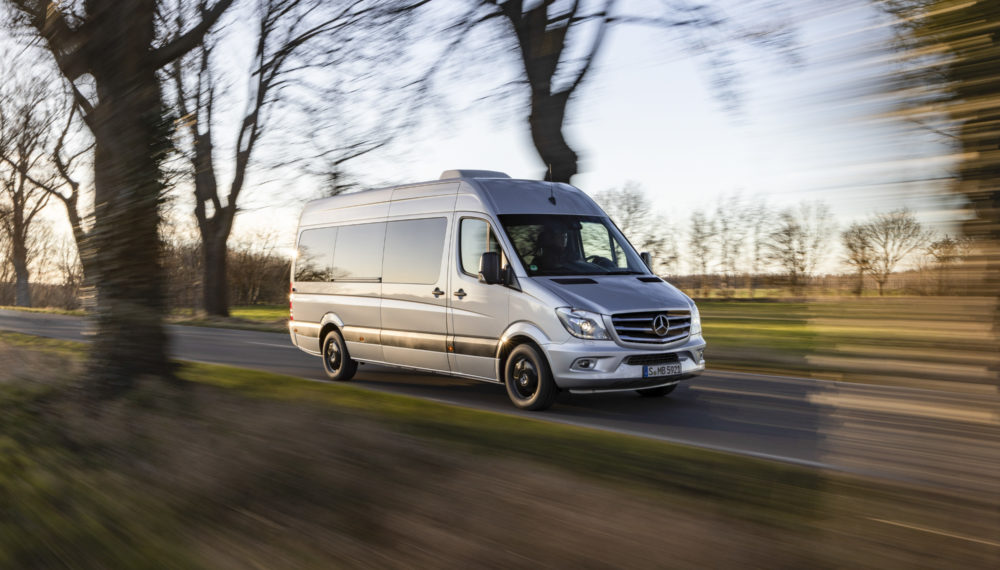In the design of new vehicles, a lot can be simulated satisfactorily on the computer these days – with the exception of human behavior. This was the main reason for Daimler Benz AG to build the driving simulator. It was inaugurated on May 10, 1985 at the Research Center in Berlin-Marienfelde. The company had invested DM 25 million to be able to research the behavior of driver and vehicle in road traffic even more intensively.
The engineers had been convinced of the driving simulator’s significance and its wide range of uses even before it was built, but obtaining approval of the investment required something of a plot. This was because the then chairman of the board of management, Gerhard Prinz, was not entirely convinced of the idea and its expensive consequences. So, before setting out on a flight, he was persuaded by two people from Daimler-Benz Research to pay a visit to Lufthansa’s flight simulator at Frankfurt/Main airport, get into the cockpit of a jet and experience the “feeling” of such a facility. After the experience, Prince was thoroughly convinced, and the board of management approved the investment.
Simulators did already exist at the time for airplanes but not for motor vehicles. So Daimler-Benz Research had to develop the simulator from scratch all by itself. In the process the developers were faced with new challenges time and again, arising from the highly complex system and its elaborate interaction of mechanics, hydraulics and electronics. And they had to observe a tight timeframe. They were still putting on the finishing touches during the night from May 9 to 10, 1985. Rumor has it that the last members of staff collapsed into their beds at two in the morning. But their commitment paid off: in the morning of May 10, 1985, the simulator functioned in exactly the way it was meant to do in demonstrations to invited guests. A new era in vehicle and traffic research had begun.
The driving simulator’s functioning can be described as follows. The test chamber is mounted on extendable and controllable hydraulic legs. Inside the chamber, a 180-degree projection wall shows simulated road scenes, realistically complemented by houses, traffic signs, pedestrians and oncoming traffic. A vehicle is placed in front of the projection wall, and its controls are connected to the simulator’s complex computer control system by means of data lines. And off we go: whatever the person at the wheel is doing in the way of steering, accelerating and braking is sensitively registered – and responded to – by the computer control system. The depicted scene changes constantly, and the chamber on its extendable hydraulic legs simulates the position of the car relative to the ground, for instance by simulating a nose dive under heavy braking or side tilt.
This sounds simple but in fact requires an extremely complex computing process. The driving simulator’s hydraulic system performs all assumed movements of the car in real time: when the car is steered into a left corner, the platform must tilt outwards to the right at the same moment and to the extent that corresponds to the car’s lateral dynamics. The illusion becomes perfect when the driver feels the corresponding return forces at the steering wheel and hears the squealing of the tires. All this and much more is produced by the driving simulator.
As a result the artificial trip is highly realistic – and has one big advantage over real-world driving: the reactions of the persons at the wheel can be watched closely, and specific tasks can be set to them as well, of course.
Let’s take the example of an evasive maneuver in a critical situation. How do the majority of drivers react? In the driving simulator, the Mercedes-Benz engineers established that the majority of test drivers stepped on the brake pedal quickly but not hard enough, thereby sacrificing valuable meters of stopping distance. This finding led to the development of Brake Assist (BAS) which identifies the situation and automatically increases brake pressure.
Such developments are time and again triggered by research work in the driving simulator which is subsequently also used for testing the relevant new technologies. In a series of tests made with Brake Assist, 55 test persons drove through a town at 50 km/h when suddenly a child ran out onto the street, requiring emergency braking in order to prevent an accident. BAS reduced the accident rate by 26 percent. It was first installed in a Mercedes-Benz production car in 1996 and today forms part of the standard specifications of all Mercedes-Benz passenger cars.
The driving simulator can also be used for testing cars which are still at the design stage and merely consist in the form of a collection of data. Engine, gearshift, suspension and brakes can be tested even before the first test cars are set up – under all weather and road conditions, in city traffic, on the motorway, in the mountains, in fog and facing a low sun. The tests are made in real time, with all the movements a car would make in normal operation, i.e. when negotiating bends at high speed, accelerating and braking.
And that’s still not all. The researchers also look into issues such as the most reasonable routing of a planned road, the “inviting” design of the entrance to a tunnel, or the stresses to which drivers are subjected in different traffic conditions. The scope of research using the driving simulator is very wide indeed.












